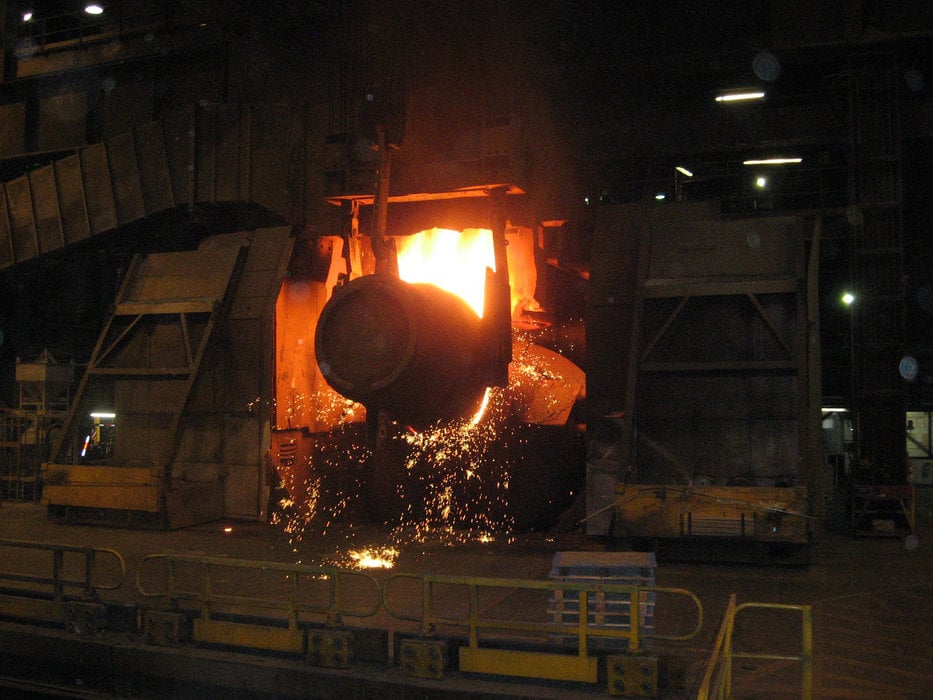www.industrymiddleeast.com
28
'10
Written on Modified on
Verlinde equips NZ Steel
A unique challenge saw KraneQuip, Verlinde reseller in New Zealand, done its thinking caps to design and build a 16 tonne crane for a tight space at NZ Steel.

The space available to fit this crane into was the first problem. “To fit a 16 tonne crane into a four metre wide space was a huge challenge. Especially when the height of lift is 30 metres,” Van der Walt says. “Normally you would use a rope hoist for this, but a hoist drum big enough to store 30 metres of rope for that size of lift would mean the hoist drum would be just about the same size as the space available”. The point load had to move from east to west on the crane girder, but a rope hoist could not do this, due to the size. “Then we looked at chain hoists. The problem with chain hoists is that the biggest size you can get off the shelf is five tonnes, or 7.5 tonnes in our case as our supplier, Verlinde, could do one that big. But this was nowhere close to the 16 tonnes we were aiming for.” The team at KraneQuip then put its thinking caps on and came up with the suggestion to use two chain hoists that could each lift 10 tonnes. But to achieve this they had to combine two five tonne chain hoists to get to 10 tonnes per assembly. Then place two of these assemblies on the crane beam.
“Several weeks later, thanks to powerfull 3D design capabilities, we managed to fit these hoists on a monorail crane beam to achieve the moving point load dimensions required. We had to redesign the end stops to achieve this, but we made it by just a few millimetres.”
The next challenge was to design a crane beam to accommodate 16 tonnes. The maximum standard “I” beam was not sufficient and a box girder would have been too expensive. So KraneQuip had to design an “I” beam girder with extra thick top and bottom flanges to take the load. By doing this they shortened the delivery time and saved NZ Steel the extra costs for not manufacturing a box girder.
The shear size of the chain bags presented another problem. The two hoist assemblies, although they fitted well with the design, could not get close enough to each other to achieve the required approach distances east and west. So the middle two chain bags had to be redesigned. “We could not go lower as we had no headroom space. So we decided to go wider,” says Van der Walt. This presented another problem in that the chain had to fall away into the full width of the bags. They had to fit deflector plates in the middle and open the bag throat to allow the chain to fill into the bag properly. The first design did not work but several modifications later achieved success.
During commissioning a lot of fine tuning had to be done to ensure that the two hooks ran equally at the same height and that the limit switches activated at the same time. Numerous difficulties appears with the long travel speed, since the crane could only go at very slow speeds in all directions. Variable speed controls have been used to smooth the operation. But with the long travel a lot of dust was accumulated on the rails, and the wheels were extra wide to take the load of the whole crane and the maximum SWL (safe working load). The power at slow speed was barely enough to make the crane move and the dust resulted in quite a few jams. In the end it was decided that the only way out was to ensure that the rails are blown clean of dust prior to every use.
“This project was a unique challenge for the team at KraneQuip and we feel proud that we succeeded with it,” says Van der Walt. “It was great to have the opportunity to help NZ Steel with a very specific requirement, even though sometimes it looked impossible!”

